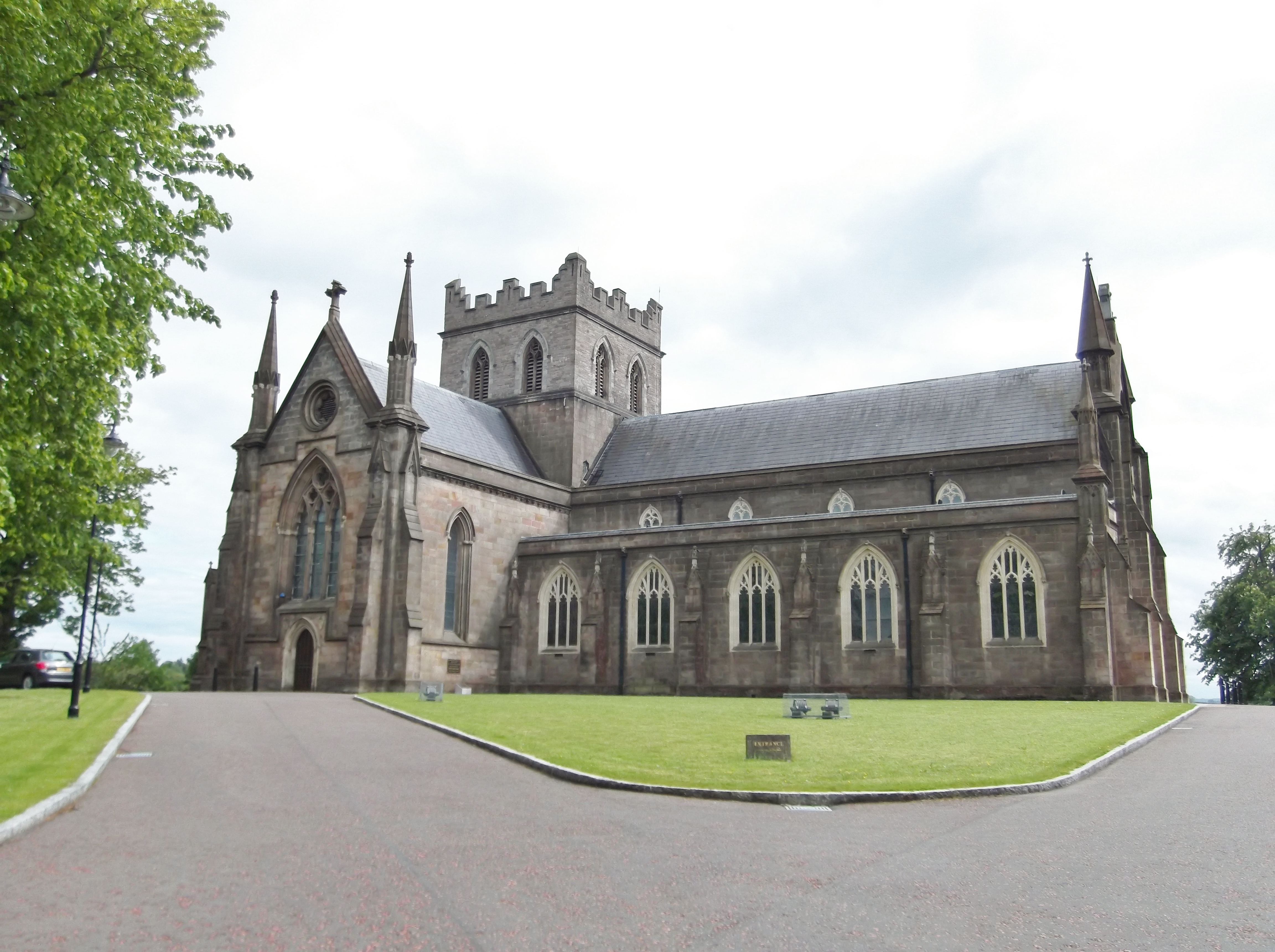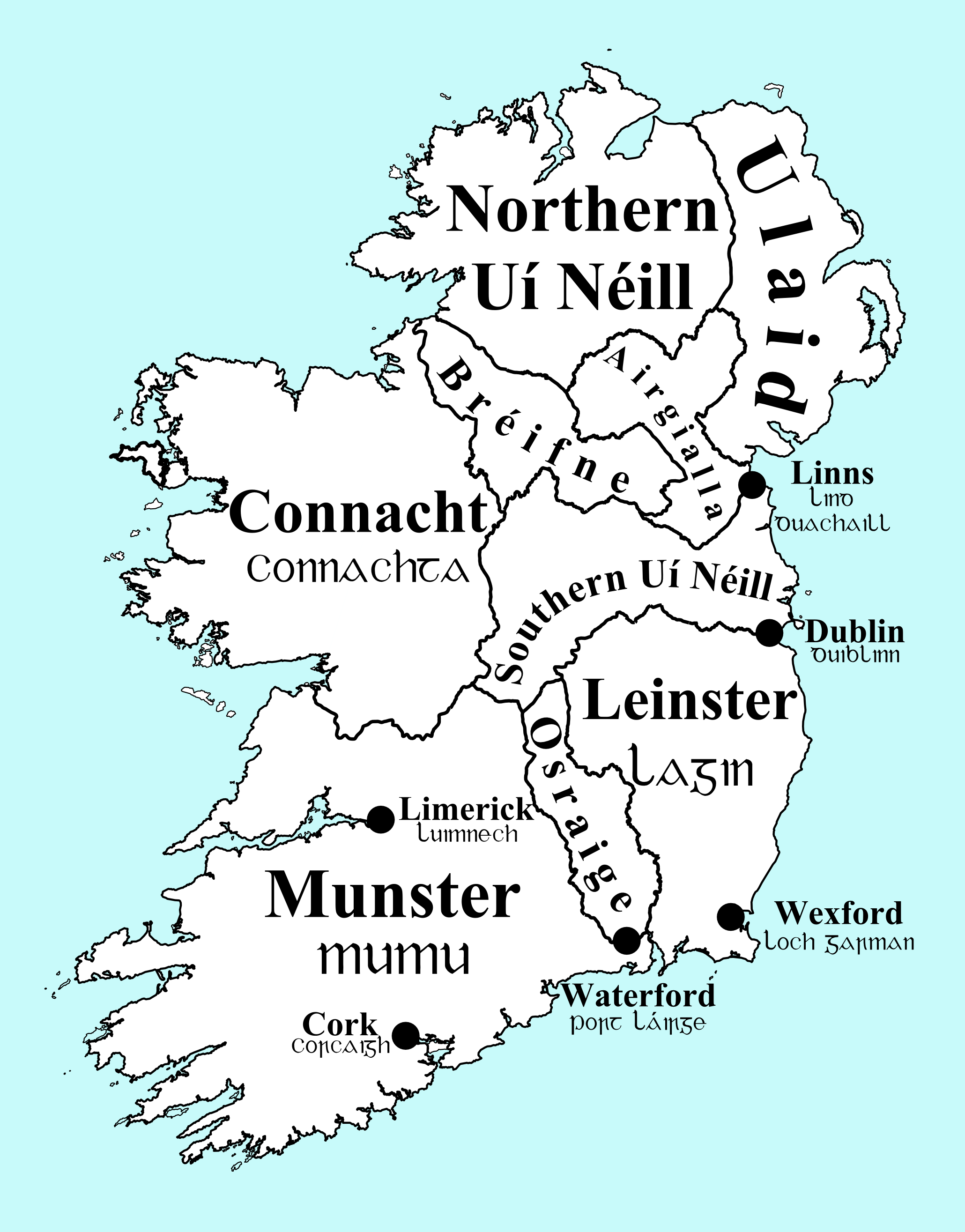|
Ăed Ua ForrĂŠid
Ăed Ua ForrĂŠid was Bishop of Armagh from 1032 to 1056. He was from the CenĂŠl Tigernaig branch of the northern UĂ NĂŠill Irish clans, kin-group of Northern UĂ NĂŠill, CenĂŠl nĂogain. The see was not elevated to an archbishopric until 1106, well after his death. A praise-poem in his honour, written sometime after his election and before 1042, exists in a single copy transcribed in 1628 by MĂcheĂĄl Ă ClĂŠirigh (Dublin, Royal Irish Academy MS B.IV.2 (1080), fol. 142r). He may have resigned the bishopric when he became ''fer lĂŠigind'' (i.e. Lector) in 1049. In the Annals of Ulster, which derive from an Armagh chronicle, in their prose notice of his death at 75 years of age, he is only "eminent lector of Armagh" (''ard-fer leiginn Aird Macha'').#Mac_Airt, Mac Airt and Mac Niocaill (ed. and trans.): The Annals of Ulster, ''s.a.'' (pp.492–493) However, a verse cited in the same entry also describes him as "gentle bishop". Notes References * * * 1056 deaths 1 ... [...More Info...] [...Related Items...] OR: [Wikipedia] [Google] [Baidu] |
Bishop Of Armagh
The Archbishop of Armagh is an archiepiscopal title which takes its name from the see city of Armagh in Northern Ireland. Since the Reformation, there have been parallel apostolic successions to the title: one in the Catholic Church and the other in the Church of Ireland. The archbishop of each denomination also holds the title of Primate of All Ireland. In the Church of Ireland, the archbishop is John McDowell, who is the ecclesiastical head of the Church of Ireland and the diocesan bishop of the Diocese of Armagh. He was elected as archbishop in March 2020 and translated to the role on 28 April 2020. In the Catholic Church, the archbishop is Eamon Martin, who is the ecclesiastical head of the Catholic Church in Ireland, metropolitan of the Province of Armagh and the ordinary of the Archdiocese of Armagh. He succeeded on 8 September 2014, having been ordained Coadjutor Archbishop of Armagh on 21 April 2013 at St Patrick's Cathedral, Armagh. History In the medieval Irish ... [...More Info...] [...Related Items...] OR: [Wikipedia] [Google] [Baidu] |
Irish Clans
Irish clans are traditional kinship groups sharing a common surname and heritage and existing in a lineage-based society, originating prior to the 17th century. A clan (or in Irish, plural ) included the chief and his Patrilineality, patrilineal relatives; however, Irish clans also included unrelated clients of the chief. These unrelated clients and their agnatic descendants were ineligible to be elected chief, but nonetheless assumed the name of the leading lineage as a show of allegiance. Beginning in the 8th century, various genealogical collections were compiled purporting to trace the ancestry of these clans. Among them are genealogies in Bodleian_Library,_MS_Rawlinson_B_502, Rawlinson B 502, the Book of Ballymote, the Great_Book_of_Lecan, Book of Lecan, the Leabhar_na_nGenealach, ''Leabhar MĂłr na nGenealach'' compiled by Dubhaltach MacFhirbisigh, and the Ă ClĂŠirigh Book of Genealogies. In all of these cases, the genealogies listed state the agnatic descent of the chiefs ... [...More Info...] [...Related Items...] OR: [Wikipedia] [Google] [Baidu] |
Northern UĂ NĂŠill
The Northern UĂ NĂŠill was any of several dynasties in north-western medieval Ireland that claimed descent from a common ancestor, Niall of the Nine Hostages. Other dynasties in central and eastern Ireland who also claimed descent from Niall are termed the Southern UĂ NĂŠill (together they are known as the UĂ NĂŠill dynasty). The dynasties of the Northern UĂ NĂŠill were the CenĂŠl Conaill and CenĂŠl nEĂłgain, named after the two most powerful sons of Niall: Conall Gulban, Conall and EĂłgan mac NĂŠill, EĂłgain. The Northern UĂ NĂŠill's over-kingdom in its earliest days was known as In Fochla and In Tuaiscert, both meaning 'the North', and was initially ruled by the CenĂŠl Conaill. After the CenĂŠl nEĂłgain's rise to dominance, it became known as Ailech. Mythical origins It is claimed in medieval Irish texts that around 425, three sons of Niall NoĂgiallach â Eoghan, Conal Gulban, and Enda â along with Erc, a son of Colla Uais, and his grandchildren, invaded north-western ... [...More Info...] [...Related Items...] OR: [Wikipedia] [Google] [Baidu] |
Poem In Praise
Poetry (from the Greek language, Greek word ''poiesis'', "making") is a form of literature, literary art that uses aesthetics, aesthetic and often rhythmic qualities of language to evoke meaning (linguistics), meanings in addition to, or in place of, Denotation, literal or surface-level meanings. Any particular instance of poetry is called a poem and is written by a poet. Poets use a variety of techniques called poetic devices, such as assonance, alliteration, Phonaesthetics#Euphony and cacophony, euphony and cacophony, onomatopoeia, rhythm (via metre (poetry), metre), and sound symbolism, to produce musical or other artistic effects. They also frequently organize these effects into :Poetic forms, poetic structures, which may be strict or loose, conventional or invented by the poet. Poetic structures vary dramatically by language and cultural convention, but they often use Metre (poetry), rhythmic metre (patterns of syllable stress or syllable weight, syllable (mora) weight ... [...More Info...] [...Related Items...] OR: [Wikipedia] [Google] [Baidu] |



